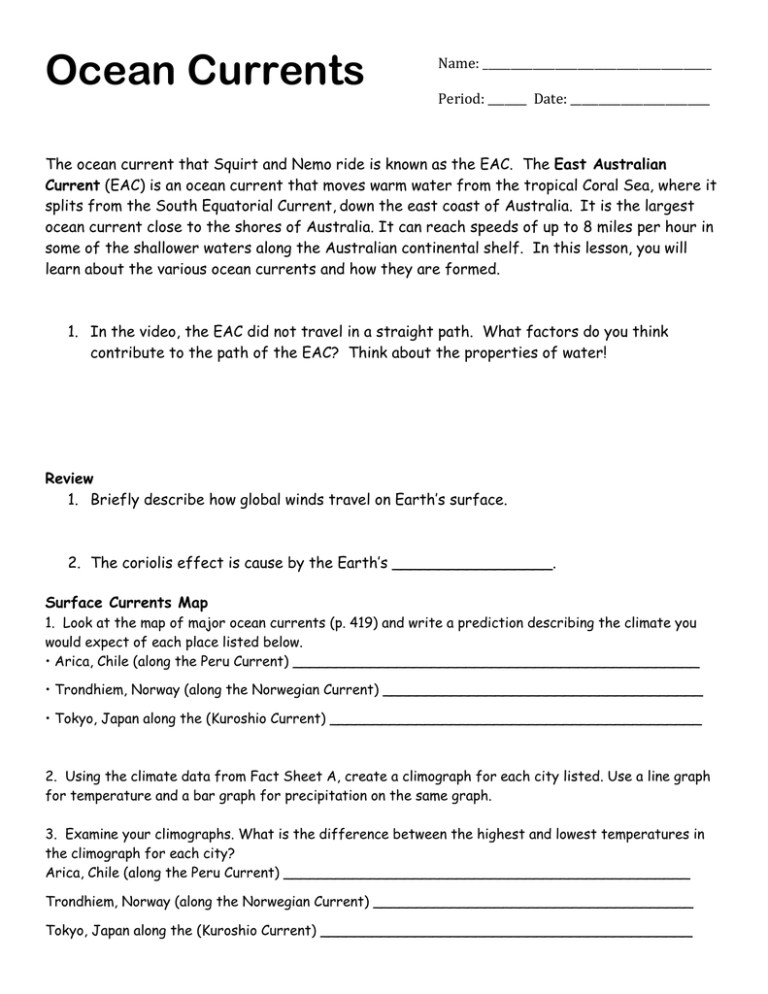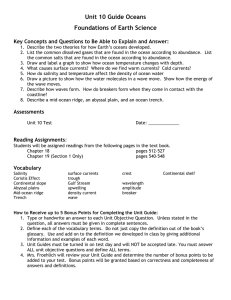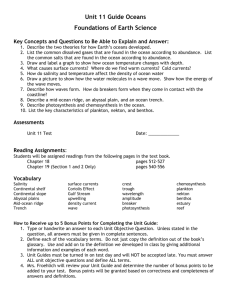is an ocean current that moves warm water from the tropical Coral
advertisement

Ocean Currents Name: _________________________________________ Period: _______ Date: _________________________ The ocean current that Squirt and Nemo ride is known as the EAC. The East Australian Current (EAC) is an ocean current that moves warm water from the tropical Coral Sea, where it splits from the South Equatorial Current, down the east coast of Australia. It is the largest ocean current close to the shores of Australia. It can reach speeds of up to 8 miles per hour in some of the shallower waters along the Australian continental shelf. In this lesson, you will learn about the various ocean currents and how they are formed. 1. In the video, the EAC did not travel in a straight path. What factors do you think contribute to the path of the EAC? Think about the properties of water! Review 1. Briefly describe how global winds travel on Earth’s surface. 2. The coriolis effect is cause by the Earth’s _________________. Surface Currents Map 1. Look at the map of major ocean currents (p. 419) and write a prediction describing the climate you would expect of each place listed below. • Arica, Chile (along the Peru Current) _______________________________________________ • Trondhiem, Norway (along the Norwegian Current) _____________________________________ • Tokyo, Japan along the (Kuroshio Current) ___________________________________________ 2. Using the climate data from Fact Sheet A, create a climograph for each city listed. Use a line graph for temperature and a bar graph for precipitation on the same graph. 3. Examine your climographs. What is the difference between the highest and lowest temperatures in the climograph for each city? Arica, Chile (along the Peru Current) _______________________________________________ Trondhiem, Norway (along the Norwegian Current) _____________________________________ Tokyo, Japan along the (Kuroshio Current) ___________________________________________ 4. Which city is in a desert? How can you tell? 5. Take a closer look at the Arica, Chile climograph. What can you tell about the seasons and the months? How is this related to the hemisphere where Arica is located? 6. Is there a relationship between the temperature of the ocean current and the coastal climate? Explain. 7. Is there a relationship between the direction of the ocean current and the coastal climate? Explain. 8. In general, on which side of the ocean basins are the cold currents? Warm currents? 9. What can you infer about the climate of each region by reviewing these climographs?







